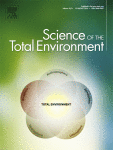Ver ítem
- xmlui.general.dspace_homeCentros Regionales y EEAsCentro Regional Santa FeEEA RafaelaArtículos científicosxmlui.ArtifactBrowser.ItemViewer.trail
- Inicio
- Centros Regionales y EEAs
- Centro Regional Santa Fe
- EEA Rafaela
- Artículos científicos
- Ver ítem
Determination of glyphosate, AMPA and glufosinate in dairy farm water from Argentina using a simplified UHPLC-MS/MS method
Resumen
Argentina, together with the USA and Brazil, produces approximately 80% of the total worldwide glyphosate loadings. The development of a simplified ultra-high performance liquid chromatographic tandem mass spectrometric method (UHPLC-MS/MS) for the determination of glyphosate, aminomethylphosphonic acid (AMPA) and glufosinate in water is described, including studies of several alternatives of 9-fluorenylmethylchloroformate (FMOC-Cl) derivatization and
[ver mas...]
Argentina, together with the USA and Brazil, produces approximately 80% of the total worldwide glyphosate loadings. The development of a simplified ultra-high performance liquid chromatographic tandem mass spectrometric method (UHPLC-MS/MS) for the determination of glyphosate, aminomethylphosphonic acid (AMPA) and glufosinate in water is described, including studies of several alternatives of 9-fluorenylmethylchloroformate (FMOC-Cl) derivatization and pretreatment steps. The proposed method includes acidification and neutralization of a low sample volume (3 mL), 2 hours derivatization step, cleanup with dichloromethane, followed by reverse phase UHPLC-MS/MS determination of the analytes. Figures of merit were satisfactory in terms of linearity, selectivity, accuracy and intermediate precision (%REC 70–105% with RSD < 15%). Limits of quantification (LOQ) were suitable for monitoring purposes (0.6, 0.2, 0.1 μg/L for glyphosate, AMPA and glufosinate respectively). The validated methodology was applied for the analysis of livestock wells waters from 40 dairy farms located in the central region of Argentina. Glyphosate and AMPA were quantified in 15% and 53% of the analyzed samples with concentrations ranging from 0.6–11.3 μg/L and 0.2–6.5 μg/L respectively. Greater concentrations of glyphosate were also verified in waters from open-reservoir tanks, which are directly exposed to the farm environment. In these cases glyphosate and AMPA occurrence increased, being quantified in the 33% and 61% of the samples with values ranging 0.6–21.2 μg/L and 0.2–4.2 μg/L respectively. Also in this case glufosinate was found in 52% samples at Cerrar]

Autor
Demonte, Luisina Delma;
Michlig, Nicolás;
Gaggiotti, Monica Del Carmen;
Adam, Claudia Guadalupe;
Beldoménico, Horacio Ramón;
Repetti, María Rosa;
Fuente
Science of The Total Environment 645 : 34-43 (December 2018) In Progress
Fecha
2018-07
ISSN
0048-9697
1879-1026
1879-1026
Formato
pdf
Tipo de documento
artículo
Palabras Claves
Derechos de acceso
Restringido
 Excepto donde se diga explicitamente, este item se publica bajo la siguiente descripción: Creative Commons Attribution-NonCommercial-ShareAlike 2.5 Unported (CC BY-NC-SA 2.5)
Excepto donde se diga explicitamente, este item se publica bajo la siguiente descripción: Creative Commons Attribution-NonCommercial-ShareAlike 2.5 Unported (CC BY-NC-SA 2.5)

